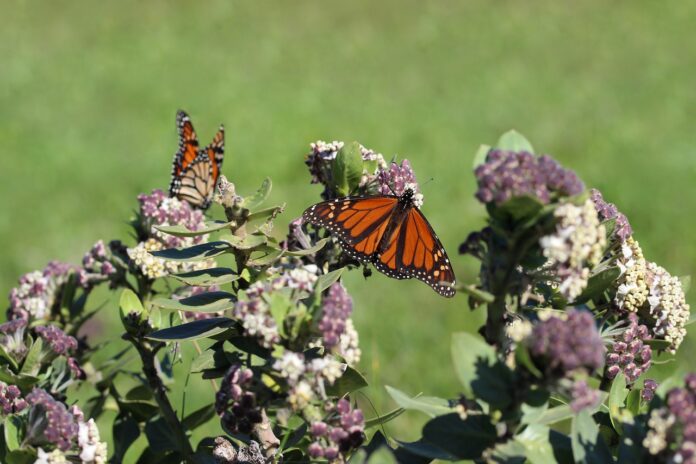By Madyson Black
As human activity and agriculture production systems continue to increase, the habitat available for pollinators decreases, becomes degraded and can ultimately be destroyed. Approximately 1/3 of our food crops need pollination to reproduce.
The need for food production is only going to increase as our world population increases. This means that more pollinator habitats will be destroyed and fragmented in order to provide more land for food production, but how can this production carry on without sufficient pollinator populations? It’s simple: It can’t.
Fall gardening for pollinators. As fall and winter weather are approaching, you can still contribute potential pollinator-saving methods to your garden or future garden.
The most important step before even beginning is planning. Research what native plants you have or don’t have and what invasive species may be present. In addition, test your soil if possible to learn what grows best or how you can change the soil condition in order to grow what you want. Consult with an expert if you’re unsure.
After you have tackled the groundwork, planted your pollinator stand and tended to it all summer long, you may think there is nothing else to do as cold weather draws nearer, but you would be wrong. There are plenty of measures you can take in order to help out those “fall-inators!”
Fencing can be put up year-round and has many benefits aside from keeping pests out.
Snow is a great mulch to help plants survive the winter; however, it is impossible to predict when and how long it has before it melts. Apply a “winter coat” of mulch after the ground freezes using straw and marsh hay or evergreen boughs.
October is the peak season for planting spring-flowering bulbs (tulips, daffodils or crocus).
Avoid raking or shredding leaves if possible as a few butterfly species spend their winters in Ohio and resemble leaves.
Fall is also a good time to plant trees and shrubs, but make sure to install fencing around new plants as they begin to emerge.
Seed and pod collection can continue up until late October and early November for an abundance of species, specifically for milkweed.
October is also the last time to get a good evaluation of your garden before the temperature drops too much. Take note of overly sensitive plants, more tolerant plants and what worked overall and what did not. You could also actively monitor and take notes throughout the spring and summer as well.
(Madyson Black is the Guernsey SWCD DPA and Education Specialist. She can be reached at mepperson@guernseycounty.org or 740-489-5276 ext. 6892.)













